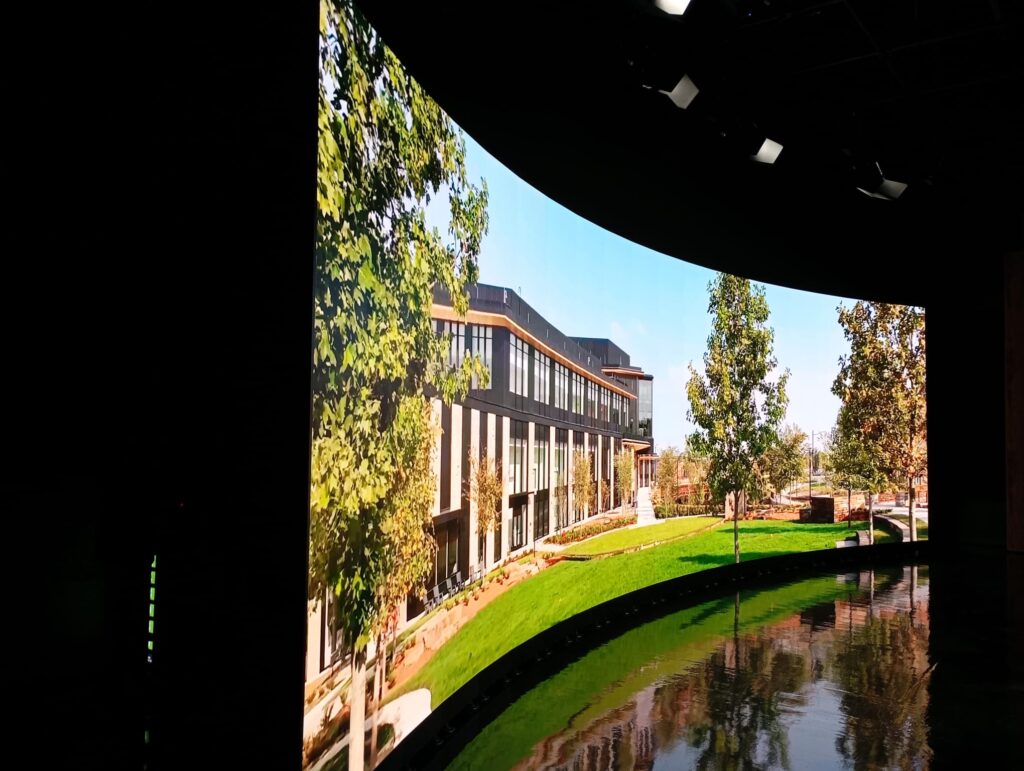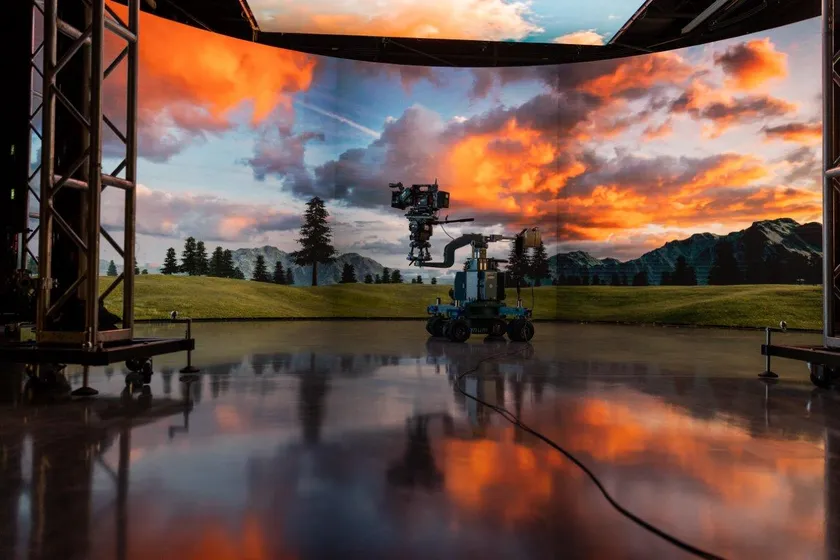Walmart has officially thrown its hat into the virtual production ring with the launch of its new state-of-the-art TV studio—complete with a 32-foot curved LED wall—located at the heart of its newly opened Home Office campus in Bentonville, Arkansas. But this isn’t just a facility upgrade. It’s a bold statement: the world’s largest retailer is now in the business of creating high-volume content, in-house, on demand.
Anchored by a 160-panel Alfalite ModularPix Pro 1.5 LED wall and powered by Brompton processing, the Walmart TV Studio (WMTV) brings extended reality (XR) production capabilities under Walmart’s own roof. The curved wall delivers 6400×2560 pixel resolution and boasts nearly 170-degree viewing angles, enabling Walmart to create immersive, virtual environments for both internal communications and outward-facing storytelling. “The downtime saved while changing out physical sets versus a virtual one is a game changer,” said Dave Magnia, Chief Engineer of AV/Broadcast Engineering at Walmart. “A few clicks, and a new virtual set is ready to go for the next video project.”
This high-spec installation—engineered in partnership with FOR-A America and designed with durability in mind—leverages Alfalite’s ORIM technology, enhancing color performance, impact resistance, and visual clarity. But the real story isn’t just technical. It’s strategic.
Walmart’s new studio is a striking example of a growing trend among major brands: building internal production infrastructure to meet the relentless pace and volume demands of digital content, especially across social platforms. Rather than relying solely on external agencies or third-party production vendors, companies like Walmart are bringing the tools of Hollywood in-house—creating broadcast-quality video at the speed of business.
The 350-acre Home Office campus, envisioned as a sustainability-focused reimagining of corporate headquarters, includes Sam Walton Hall—a 200,000-square-foot auditorium and collaboration hub that houses the new studio. With 60,000 square feet dedicated to learning, production, and innovation, it’s clear that Walmart isn’t just training employees; it’s producing a steady stream of high-impact media designed for a modern, content-first brand ecosystem.
The shift reflects a new era where brands operate like media companies—building their own studios, hiring full-scale production teams, and investing in cinematic tools once reserved for film and TV. And for a company with Walmart’s scale, the ROI isn’t just in savings—it’s in speed, control, and consistency.
“This collaboration highlights Walmart’s commitment to innovation,” said Silvia C. Natal, International Sales Manager at Alfalite. “It demonstrates the power of advanced LED solutions in high-profile, high-output content environments.”
As platforms evolve and audiences expect content that feels as immersive as it is immediate, the move toward internal production studios may no longer be a luxury—it may be table stakes. With WMTV up and running, Walmart is positioning itself not just as a retailer, but as a content machine.


















